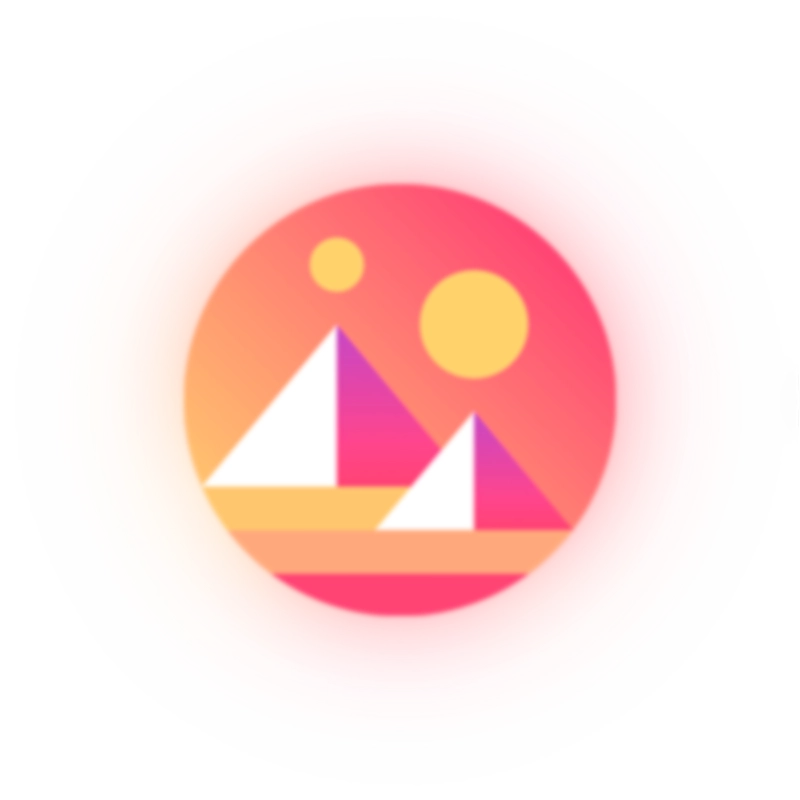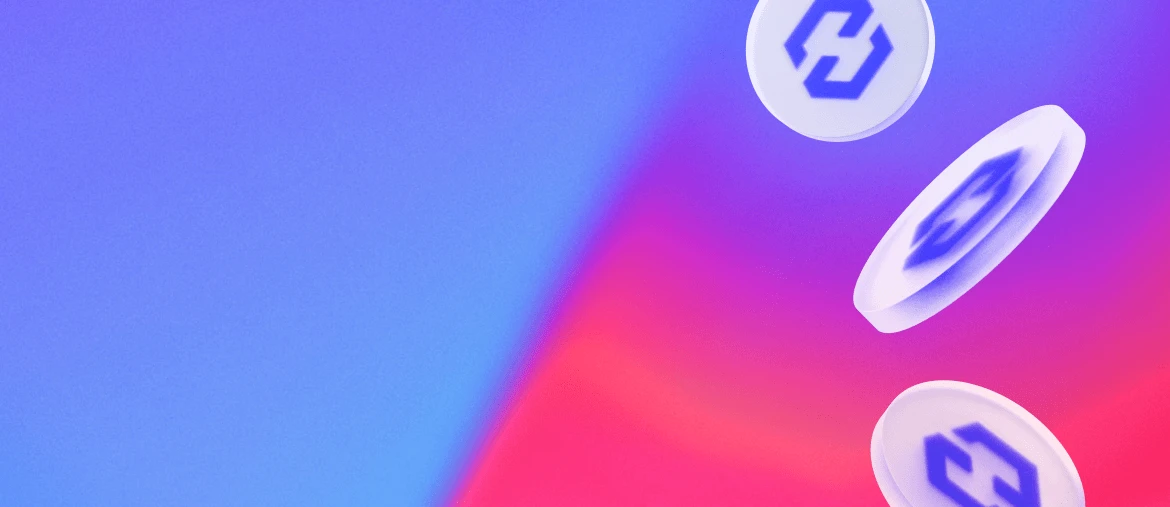Investing in crypto-assets carries risks of liquidity, volatility, and partial or total capital loss. Crypto-assets held are not covered by deposit and securities guarantee mechanisms.


Sign up for our newsletter
Partners
Coinhouse
Our accounts
Coinhouse
Coinhouse SAS with a capital of €210,000, RCS Paris 815 254 545, headquarters: 14 Avenue de l'Opéra 75001 Paris – support@coinhouse.com. Registered with the AMF for activities related to the purchase/sale of digital assets against legal tender, the exchange of digital assets for other digital assets, and the custody of digital assets for third parties under the registration number: E2020-001.
Coinhouse payment solutions
Company registered with the Paris RCS under the number 914 384 557, registered with the Prudential Control and Resolution Authority as a payment service agent under the number 727503 of the electronic money institution Treezor, headquartered at 33 Avenue de Wagram, 75017 Paris.
General conditions, disclaimers and legal documents.



Decentraland is a virtual reality platform or metaverse that runs on the Ethereum blockchain.
The aim of Decentraland is to offer a virtual world.
Players can purchase (virtual) plots and add to their experience by installing infrastructure and services.
Recently, it has also become possible to rent plots.
The platform made a big splash during the 2021 bull run.
Boosted by the metaverse’s arrival with great fanfare, Decentraland recorded very strong sales.
For example, on November 23, 2021, a parcel was sold for the record price of 2.4 million dollars.
Decentraland regularly organizes events to raise awareness of the metavers platform.
For example, the team organizes Fashion Week and an annual music festival.
In terms of operation and philosophy, Decentraland is close to another metaverse platform, The Sandbox.
With its potential and positioning at the crossroads of NFT and gaming, the metaverse is an area of great potential in crypto.
According to Coinmarketcap, the metaverse sector has a market capitalization in excess of €30 billion.
The main crypto metavers in terms of capitalization are : Internet Computer (ICP), Stacks (STX), Render (RNDR), Theta Network (THETA) and FLOKI (FLOKI).
These cryptos or tokens have a link with the metaverse, but are not used for the strict operation of a virtual reality platform such as Decentraland or The Sandbox.
Technically, Decentraland uses the blockchain (Ethereum), a native token (MANA) and NFTs.
This combination enables Decentraland to operate on a decentralized basis.
Decentraland is one of Ethereum’s many decentralized applications (dApps).
In terms of hosted value (TVL), Decentraland currently ranks 57th with $21 million. What is the MANA token? MANA is Decentraland’s native token, an ERC-20 token running on Ethereum.
At the time of writing, the price of the MANA crypto is €0.58 (as of March 21, 2024).
The MANA token was brought to market in 2017 as part of an ICO (Initial Coin Offering).
For a long time, the MANA price remained in the hundredths of a euro range.
Then, the MANA price took advantage of the 2021 crypto bull run to rise sharply.
The record price for the Decentraland crypto is €5.4, reached on November 25, 2021.
Decentraland’s capitalization is €1.1 billion, positioning the token in the world’s top 100.
To put this into context, Decentraland’s capitalization is close to that of other well-known cryptos such as Chiliz (CHZ), ApeCoin (APE), Tezos (XTZ) and EOS (EOS). Buy MANA safely with Coinhouse.
The development of the Decentraland project has gone through several stages.
It all began in 2015.
Originally, when Decentraland was just a concept, the platform allowed users to buy digital real estate.
This was represented by a pixel on a 2D map.
Each pixel contained information about its owner.
Users could mine, transfer and change the color of « their » pixel.
A still rudimentary concept that corresponded to theStone Age as defined by the Decentraland team.
A turning point came at the end of 2016 with the advent of what Decentraland’s developers call theBronze Age.
The virtual world moved into the third dimension and was divided into plots (or terrains).
Users could then build simple structures on these plots.
The final phase corresponds to theIron Age, which began in 2017 and is still ongoing.
It introduces the possibility of building social experiences associated with the development of a virtual economy.
This Iron Age saw the launch of land tokenization via LAND and MANA tokens.
Eventually, it will also enable developers to create and monetize decentralized applications (dApps).
In addition, the team is working to create :
Ariel Meilich and Esteban Ordano are the two main people behind the development of Decentraland.
They both have extensive experience in the FinTech field.
Esteban Ordano (CEO of Decentraland), for example, created Zeppelin Solutions and then worked for various crypto firms such as Streamium, BitPay, Bitcore, Copay, Insight or MATIC (Polygon).
Ariel Meilich (project manager for Decentraland) has a background in venture capital and data analysis.
He has worked as an analyst at Charles River Ventures and with Amazon and General Electric.
Manuel Araoz and Yemel Jardi are two other board members who have worked for years in crypto.
In addition to the board members, Decentraland benefits from the knowledge of others who specialize in crypto, digital, IT, data transfer and more.
The project’s white paper, for example, involved the following people:
Live MANA courses.
Decentraland is a particular crypto application that brings two technologies into play: virtual reality and blockchain.
Virtual reality allows players to explore Genesis City and take part in various experiences.
The blockchain, on the other hand, is used to record transactions in a secure, decentralized way.
Decentraland’s blockchain architecture involves three levels (or layers):
When players wish to interact with each other, the request starts from the real-time layer, arrives at the Land Content level, goes to the consensus layer and then works backwards.
Decentraland has forged numerous partnerships over time with HT, CoinGecko, SophiaVerse, OVER, Animoca.
In 2019, Decentraland has teamed up with virtual reality headset manufacturer HTC.
The platform has also forged a collaboration with the Polygon network (MATIC), layer 2 of Ethereum.
The aim is to create a sidechain (backed by Ethereum) that can handle transactions outside Ethereum for greater scalability and therefore lower costs.
The most notable recent partnerships have been :
Decentraland is much more than just a metavers platform.
What makes Decentraland so special is its blockchain-based operation.
Unlike centralized metaverse platforms such as Meta, on Decentraland, users’ assets (virtual real estate) are stored in the form of a token(NFT) and registered on the blockchain.
This enables Decentraland to operate in a decentralized way and « tokenize » players’ winnings.
By combining blockchain and metaverse, Decentraland opens the way to a new type of virtual world.
In addition to being a player, the user is the owner of his or her real estate and can monetize his or her « assets » at any time by selling his or her MANA tokens.
What’s more, unlike centralized platforms such as Meta, Decentraland gives decision-making power to its users via its DAO.
The principle behind Decentraland is very similar to that of The Sandbox.
You buy land and then create interactive experiences.
However, it has its own rules.
Decentraland’s virtual world is called Genesis City, and comprises a total of 90,601 plots (compared with 166,464 in The Sandbox).
As they travel through Genesis City, players have access to a number of experiences, including auctions, casino games and a FantasticLand theme park.
On Decentraland, for example, the dimensions of each plot are 16 m by 16 m (52 ft by 52 ft) (compared with 96 m by 96 m on The Sandbox).
For more space, several adjacent plots can be grouped together to form an estate.
Finally, a « scene » defines all the experiences available on one or more plots.
The 4 scene categories are :
Rules define how to arrange the scene in terms of number of entities, people, height as follows (n is the number of parcels included in the scene):
Decentraland also makes it possible to create an avatar and personalize it via accessories available on its marketplace.
These fall into different categories, such as :
To play Decentraland, all you need is a standard computer (or Mac).
On the Decentraland website, we recommend a computer with an AMD Radeon RX 500 graphics card or equivalent, 4 GB memory and 16 GB RAM.
There is no mobile version at present.
Decentraland can be used with classic browsers such as Chrome, Firefox or Brave.
The first thing to do is to connect a crypto wallet compatible with Decentraland.
As the MANA token is an ERC-20 token, it is compatible with many wallets on the market, such as Ledger, Trezor or MetaMask.
Then you need to buy MANA tokens on an exchange like Coinhouse (see below).
These tokens will then enable you to buy LANDs.
Once purchased, you can add experiences to them via the « Builder » menu.
This simple menu lets you import 3D objects using the click-and-drag principle.
If you’re a programmer, you can do this via lines of code using the SDK library.
With Decentraland, you’re in control of your real estate.
So you can decide who you want to invite into your house on your plot, for example.
Decentraland features two tokens launched during the last phase of development, known as the Iron Age.
The first token is called LAND.
It’s an ERC-721 token running on Ethereum.
This token standard corresponds to NFT, non-fungible tokens.
A LAND token corresponds to a parcel.
The second token is MANA, the platform’s native token.
Its standard is ERC-20, and it also works on Ethereum.
The MANA token is mainly used to purchase land and services.
Plot prices depend on the market.
The Decentraland marketplace lists all land for sale.
For example, at the time of writing, the cheapest LAND is on sale for 1,050 MANA, equivalent to €580.
The MANA token also enables you to participate in Decentraland ‘s decentralized governance (DAO).
Decentraland’s DAO is based on Aragon, an Ethereum platform designed to facilitate the creation of autonomous organizations.
Each MANA and LAND token carries one vote.
Voting takes place via the wrapped version of the MANA and LAND tokens, i.e. wMANA and wLAND.
Each LAND gives 2,000 units of voting power.
In addition to the DAO, Decentraland has created a Security Advisory Board(SAB).
The SAB serves to :
The SAB is made up of 5 members who are experts or people appointed by the Decentraland community. How can MANA be staked? Staking allows you to generate passive income.
Once you’ve purchased MANA tokens, you can « stake » them, i.e. lock them in for a predefined period to help validate the network.
It is possible to stake MANA on certain exchanges or dedicated staking sites.
The number of MANA tokens is limited to 2,805,886,393 tokens.
The token cannot be mined.
The only way to acquire MANA tokens is via exchange platforms.
MANA tokens are available on most centralized exchanges, as well as on DEXs such as Uniswap.
There are currently 1,908,319,865 tokens in circulation.
Decentraland carries out regular burns to limit the number of MANA tokens in circulation.
The tokens linked to the 2.5% transaction fee are thus burned, i.e. removed from circulation. TECHNICAL DATA
| Compatible wallets | MetaMask, Trezor, Ledger, SafePal |
|---|---|
| TVL | 21 million dollars |
| Number of unique portfolios registered | 242 |
| Capitalization | 1.1 billion euros |
| Transaction volume | 130 million euros |
| Programming languages | EVM |
| Consensus mechanism | POS Proof-Of-Stake (Ethereum) |
| Fees | 2,5 % |
Share the article


Download app